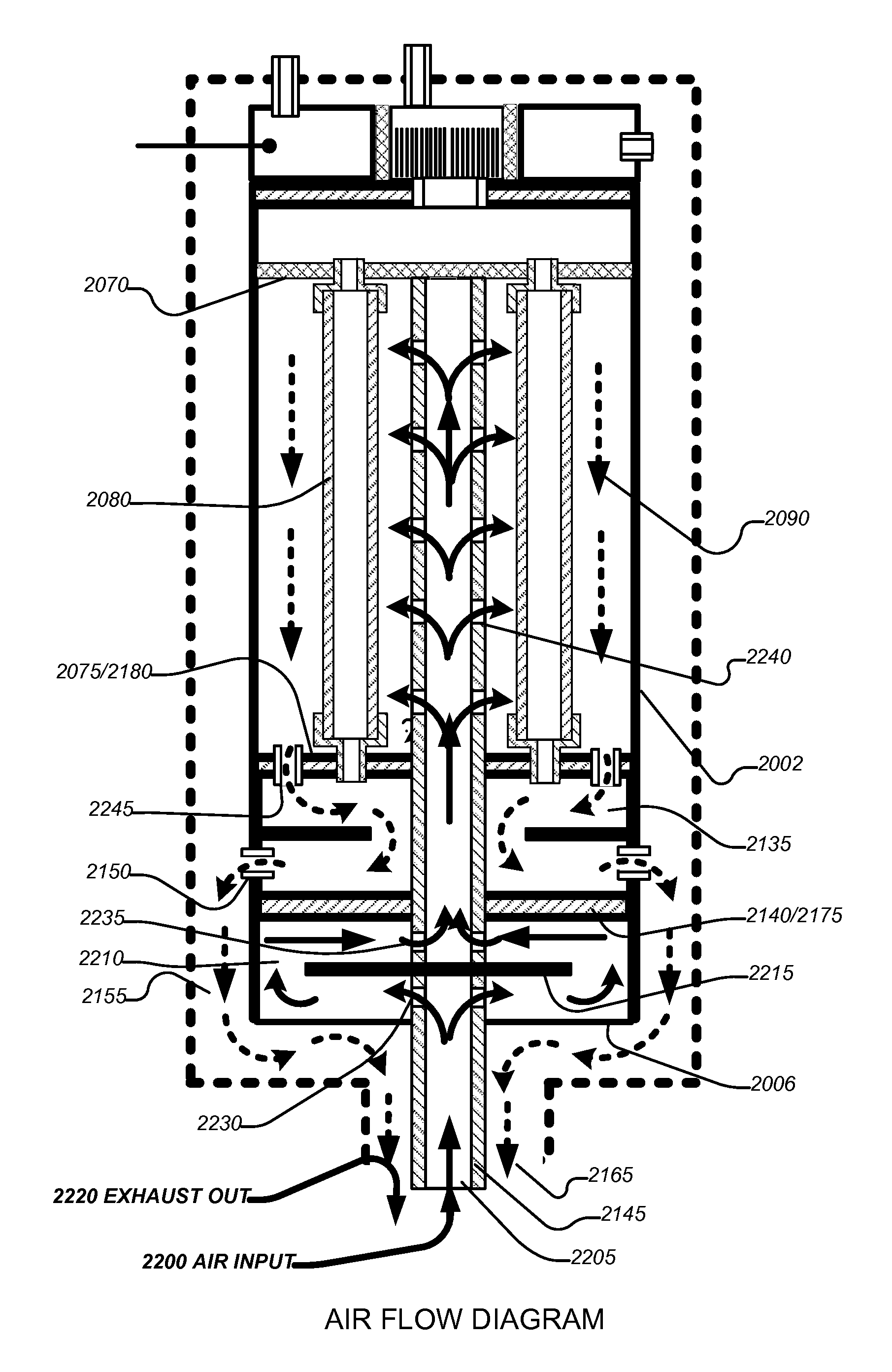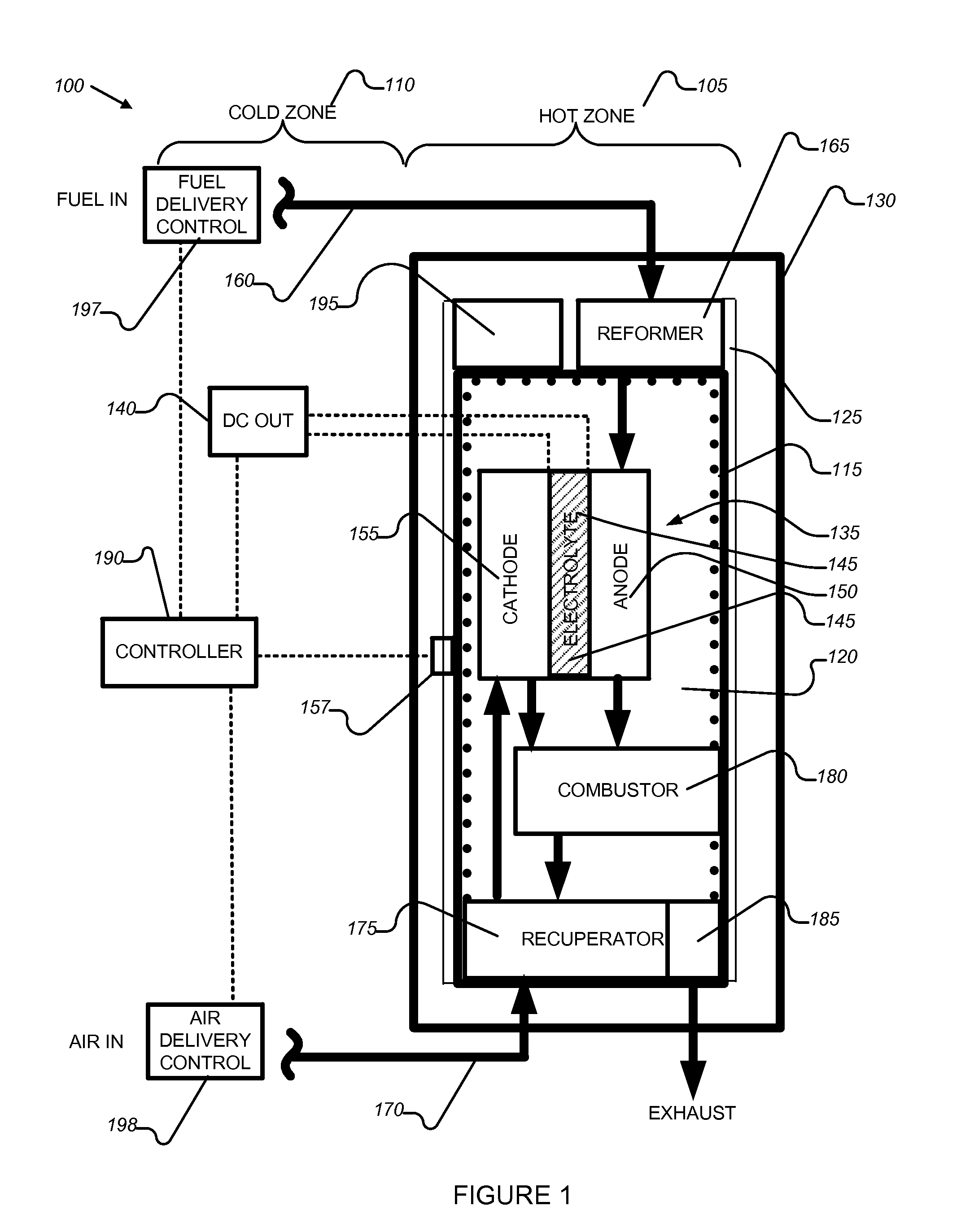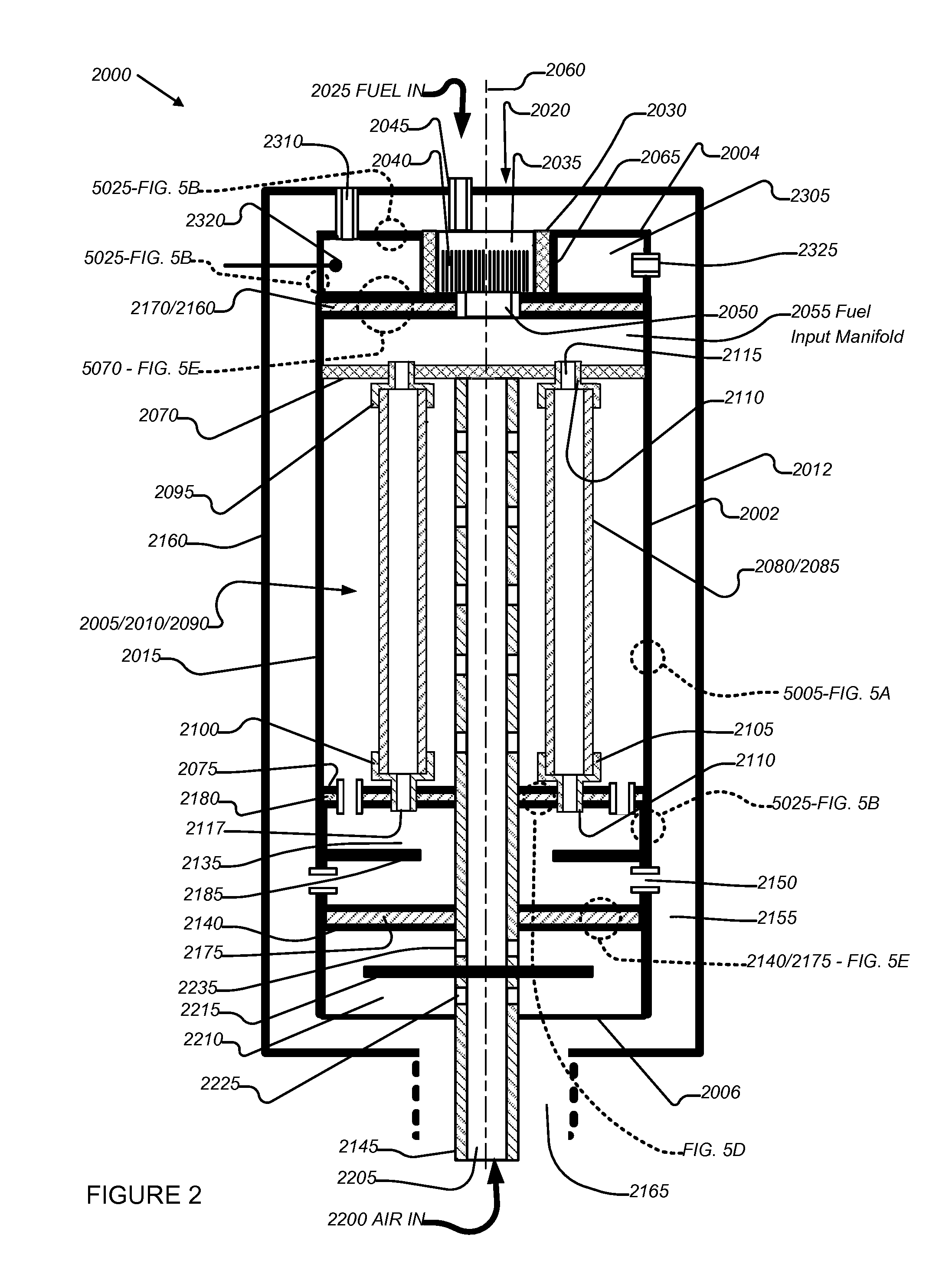Sofc-conduction
a fuel cell and conductor technology, applied in the direction of fuel cells, solid electrolyte fuel cells, electrolytes, etc., can solve the problems of damage to enclosure walls, difficult control of conventional sofc systems, and inefficient thermal energy exchange between tail gas combustor and recuperator, etc., to achieve high thermal conductivity, manage thermal energy exchange, and reduce thermal gradients across the sofc system
- Summary
- Abstract
- Description
- Claims
- Application Information
AI Technical Summary
Benefits of technology
Problems solved by technology
Method used
Image
Examples
first embodiment
[0038]Referring to FIG. 1, a schematic diagram of the present invention depicts a Solid Oxide Fuel Cell (SOFC) system (100). The system (100) includes a hot zone (105), that includes at least one SOFC fuel cell and preferably a plurality of fuel cells forming a fuel cell stack maintained at a high operating temperature, and a cold zone (110) that includes fuel input and exhaust modules, a DC power output module and other control elements. Hot zone enclosure walls (115) are disposed to enclose a hot zone cavity (120) therein. A thermal insulation layer (130) surrounds the enclosure walls (115) to thermally insulate the hot zone (105). An air gap (125) is provided between the insulation layer (130) and a side wall of the hot zone enclosure walls (115) and the air gap provides a gas flow conduit for gases to flow from different regions of the hot zone to an exhaust port (185).
[0039]According to an important aspect of the present invention, the hot zone enclosure walls (115) and associa...
second embodiment
[0068]The fuel mixture (2025) is flowed over the anode material layer while the cathode gas, oxygen (air) is flowed over the cathode material layer in order to generate electrical current flow. The current flow passes out of the cell stack over the electrical terminals (2125) and (2130) to the DC terminals (140) and may be used to power external devices. It is noted that in other embodiments such as the second embodiment briefly described above, the anode and cathode surfaces can be reversed with the cathode layer on the inside diameter of the fuel cells and the anode layer on the outside diameter of the fuel cells and air flowing through the gas flow conduit formed by the fuel cells and fuel flowing over outside surface of the fuel cells without deviation from the present invention.
[0069]The fuel input manifold (2055) comprises a cylindrical chamber bounded by a disk-shaped top wall (2170) and the opposing disk shaped top tube support wall (2070). The disk-shaped top wall (2170) in...
PUM
 Login to View More
Login to View More Abstract
Description
Claims
Application Information
 Login to View More
Login to View More - R&D
- Intellectual Property
- Life Sciences
- Materials
- Tech Scout
- Unparalleled Data Quality
- Higher Quality Content
- 60% Fewer Hallucinations
Browse by: Latest US Patents, China's latest patents, Technical Efficacy Thesaurus, Application Domain, Technology Topic, Popular Technical Reports.
© 2025 PatSnap. All rights reserved.Legal|Privacy policy|Modern Slavery Act Transparency Statement|Sitemap|About US| Contact US: help@patsnap.com



